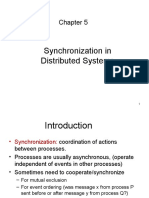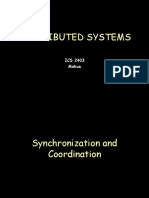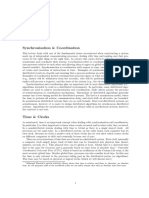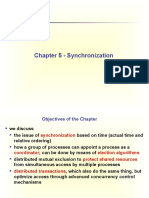0% found this document useful (0 votes)
15 views61 pagesModule 3-DC
The document discusses synchronization in distributed computing, focusing on clock synchronization and mutual exclusion algorithms. It explains the importance of synchronizing clocks for proper resource allocation and event ordering in distributed systems, detailing both centralized and distributed clock synchronization methods. Additionally, it covers mutual exclusion algorithms, including token-based and non-token based approaches, emphasizing the need for fairness, deadlock prevention, and fault tolerance in distributed environments.
Uploaded by
MIHIR THAKURCopyright
© © All Rights Reserved
We take content rights seriously. If you suspect this is your content, claim it here.
Available Formats
Download as PDF, TXT or read online on Scribd
0% found this document useful (0 votes)
15 views61 pagesModule 3-DC
The document discusses synchronization in distributed computing, focusing on clock synchronization and mutual exclusion algorithms. It explains the importance of synchronizing clocks for proper resource allocation and event ordering in distributed systems, detailing both centralized and distributed clock synchronization methods. Additionally, it covers mutual exclusion algorithms, including token-based and non-token based approaches, emphasizing the need for fairness, deadlock prevention, and fault tolerance in distributed environments.
Uploaded by
MIHIR THAKURCopyright
© © All Rights Reserved
We take content rights seriously. If you suspect this is your content, claim it here.
Available Formats
Download as PDF, TXT or read online on Scribd
/ 61
































































































